Local Attorney honored as ‘Best Lawyer’
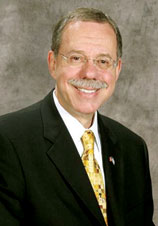 Vic Bergman is a very modest man, describing himself as “a working class kid from New York, (the) first college graduate of the family.” That “working class kid” recently was named Best Lawyer in the category of product liability for Greater Kansas City.
Vic Bergman is a very modest man, describing himself as “a working class kid from New York, (the) first college graduate of the family.” That “working class kid” recently was named Best Lawyer in the category of product liability for Greater Kansas City.
A practicing attorney since 1975, Bergman has been on the Best Lawyers list since 1987, but this is the first time he was named “Best of the Best” in his category.
“I do the broad range of personal injury cases, from trucking accidents to medical malpractice, so it was odd to get named just for product liability. In fact I have not done very much products work the past couple of years, but am really appreciative of the honor which I take as a recognition of a body of work,” said Bergman about his honor.
An honors graduate of the State University of New York at Buffalo (where he met his wife, Susan), Bergman received his Juris Doctor from the University of Kansas School of Law in 1975. He was a member of all three of the law school’s honor societies: Order of the Coif, Law Review and Moot Court.
Immediately after graduation, he accepted a job with Schnider, Shamberg & May, Chtd., the predecessor of Shamberg, Johnson & Bergman, Chtd., where he was made a partner in three years.
“I consider myself very lucky,” Bergman added. “The firm was well established and hired me right out of law school. Even though I had no other offers, it was the job I wanted the most.” And he’s remained there, in the firm that gave him what he considered a “golden opportunity.” The firm’s area of practice — the representation of people who are catastrophically injured and families who have lost loved ones as the result of wrongdoing — is rewarding to Bergman in so many ways, and true to Bergman’s 1960s anti-establishment values. “I get to pick my clients, and go fight against the big boys, so I am pretty comfortable with the merits of my cases.”
Bergman, who worships at both BIAV and Torah Learning Center, said he’s grateful for all he’s learned from the firm’s partners.
“There’s an interesting story behind the founders of the firm,” he explained. “Founders Joseph Cohen, Charles Schnider and John Shamberg, all Jewish, were nationally recognized trial lawyers. In fact, Joe and Charlie were among the group of lawyers who started what became the American Trial Lawyers Association! The area of plaintiff’s personal injury practice, at the time, was dominated nationally by brilliant Jewish trial lawyers who had not been given jobs or opportunities by the then-established firms.”
Bergman added, “John Shamberg told me in his dramatic way that the establishment attorneys would not even walk on the same side of the street with plaintiffs lawyers. The representation of the injured, the widow and the orphan is so consistent with biblical Jewish values that it was a natural place for Jewish lawyers who were outsiders to gravitate with their great skills. Today, the decidedly Jewish domination has ended as the plaintiffs practice has a much broader appeal.”
Shamberg joined the firm in 1948 and helped bring it to new levels of sophistication and success. The firm was reorganized under the name of Schnider, Shamberg & May in the 1960s. According to the firm’s website (www.sjblaw.com): “This was during the golden age of the development of tort law. During this time Charlie Schnider and John Shamberg pioneered trial techniques and learned and taught with other master trial lawyers all over the country. They earned a reputation as a regional powerhouse plaintiff’s personal injury firm.”
Lynn Johnson joined the firm in 1970 and Bergman in 1975. Both were trained and mentored as trial lawyers by Schnider and Shamberg. John Parisi joined in 1989, and in 1995, the firm name changed to Shamberg, Johnson & Bergman.
Bergman described the founders of the firm as being “legal giants, dedicated to represent individuals and families who experienced catastrophic personal injury, economic loss or death. Despite often facing powerful companies or individuals, these attorneys battled on behalf of their clients, in courtrooms throughout Missouri and Kansas.”
It’s that tradition of representing people who feel small and powerless that has given the law firm — and Bergman — such a respected reputation among attorneys. According to the Best Lawyers website, “Best Lawyers is the oldest and most respected peer-review publication in the legal profession. For three decades, Best Lawyers® lists have earned the respect of the profession, the media, and the public, as the most reliable, unbiased source of legal referrals anywhere. The 18th edition of The Best Lawyers In America (2012) includes 43,629 attorneys in 135 practice areas, covering all 50 states and the District of Columbia, and … is based on more than 3.9 million evaluations of lawyers by other lawyers.”
Bergman is most well known for handling personal injury “cases that involve severe injury or death. For more than 30 years, he has had a special interest in representing children and their families in obstetrical malpractice and other birth injury cases. In court he’s proven the connection between medical malpractice around the time of birth and cerebral palsy and death,” according to the firm’s website.
Some of his cases have set legal precedent. Again, from the firm’s website: Bergman was “a national figure in the legal fight for women who were injured, and for the families of those killed by Toxic Shock Syndrome. In court, he proved the correlation between Toxic Shock Syndrome and the use of highly absorbent tampons. Proctor & Gamble paid an undisclosed settlement to the victims and their families in these cases.”
Bergman’s other well-known cases include verdicts against Colt Industries Operating Corporation, where he “proved the design of the Colt Single Action Revolver, which goes back to 1873 — ‘The Gun That Won The West’ — was defective and unreasonably dangerous.”
And he represented Hall of Fame Sprint Car driver Doug Wolfgang against a racetrack and the sponsoring organization, for “failure to provide adequate fire and rescue services for drivers. The case had major implications for the industry.”
Partner Lynn Johnson, who also was named as “Best of the Best” in the field of medical malpractice this year, said of his partner and colleague, “Vic and I have been together as partners for nearly 37 years and I consider him to be a great and fast friend and one of the very best trial attorneys in the country.”
He added, “We are both very proud of our law firm and our law firm’s founders’ history, tradition and steadfast reputation for representing every client with respect, dignity and our very best effort regardless of the value of the client’s case. Vic’s tenacity, skill, determination, work ethic and respect for every client makes him, in my opinion, a very special person and trial attorney! I am proud to be his partner and look forward to many more years of practicing together in our firm.”
Bergman, who is a member of the Bar in both Missouri and Kansas, is a member of both states’ Trial Lawyers Association as well as the American Trial Lawyers Association, (now known as the American Association for Justice). He was inducted in the American College of Trial Lawyers in 1998, limited to the top 1 percent of trial lawyers nationwide. He also is a charter member and past president of the Kansas (Earl E. O’Connor) Inn of Court and was elected five times to the Tenth Judicial District Nominating Commission.



 Just as King Herod commissioned the Western Wall as part of a Temple renovation in 37 BCE, the Child Development Center at the Jewish Community Center now has a commemorative wall of its own, enriching its first expansion in more than 20 years.
Just as King Herod commissioned the Western Wall as part of a Temple renovation in 37 BCE, the Child Development Center at the Jewish Community Center now has a commemorative wall of its own, enriching its first expansion in more than 20 years.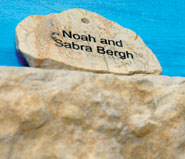 The CDC’s wall originated as white stone from Hebron. From that supply 55 individual stones were crafted, many nearly 18 feet by 18 feet and weighing about 40 pounds.
The CDC’s wall originated as white stone from Hebron. From that supply 55 individual stones were crafted, many nearly 18 feet by 18 feet and weighing about 40 pounds. Sid Shachnow isn’t your average retiree. The Army major general, who led the Green Berets for 32 years, is also a Holocaust survivor who immigrated to the United States from Lithuania more than 60 years ago.
Sid Shachnow isn’t your average retiree. The Army major general, who led the Green Berets for 32 years, is also a Holocaust survivor who immigrated to the United States from Lithuania more than 60 years ago.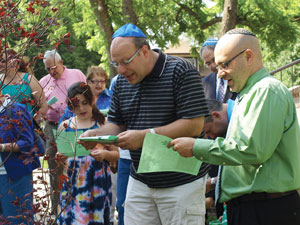 RABBI CRAIG LEWIS INSTALLATION WEEKEND — Rabbi Craig Lewis’ installation as rabbi of the South Street Temple in Lincoln, Neb., was featured in the June 1 edition of The Jewish Press in Omaha. In the article, reporter Sarah Kelen noted that he is the congregation’s 29th religious leader since its founding in 1884. The Temple’s historic sanctuary was full, as Temple members, a number of Lincoln’s Christian clergy and other members of the Jewish and general community joined together to welcome Rabbi Lewis and to share in Shabbat prayer. Lincoln Mayor Chris Beutler welcomed Rabbi Lewis, who is a native Kansas Citian and the son of Stu Lewis and the late Hilary Lewis, as a new addition to Lincoln’s interfaith leadership. David Polson, head of the Lincoln chapter of the University of Kansas Alumni Association, was also on hand to greet Rabbi Lewis (KU 1996) with a “Rock chalk.” Rabbi Lewis’s mentor and friend, Rabbi Kenneth Kanter, director of the Rabbinical School at Hebrew Union College-Jewish Institute of Religion in Cincinnati, officiated at the installation. Other events that weekend included the dedication of a tree on the Temple’s grounds in honor of Rabbi Lewis.
RABBI CRAIG LEWIS INSTALLATION WEEKEND — Rabbi Craig Lewis’ installation as rabbi of the South Street Temple in Lincoln, Neb., was featured in the June 1 edition of The Jewish Press in Omaha. In the article, reporter Sarah Kelen noted that he is the congregation’s 29th religious leader since its founding in 1884. The Temple’s historic sanctuary was full, as Temple members, a number of Lincoln’s Christian clergy and other members of the Jewish and general community joined together to welcome Rabbi Lewis and to share in Shabbat prayer. Lincoln Mayor Chris Beutler welcomed Rabbi Lewis, who is a native Kansas Citian and the son of Stu Lewis and the late Hilary Lewis, as a new addition to Lincoln’s interfaith leadership. David Polson, head of the Lincoln chapter of the University of Kansas Alumni Association, was also on hand to greet Rabbi Lewis (KU 1996) with a “Rock chalk.” Rabbi Lewis’s mentor and friend, Rabbi Kenneth Kanter, director of the Rabbinical School at Hebrew Union College-Jewish Institute of Religion in Cincinnati, officiated at the installation. Other events that weekend included the dedication of a tree on the Temple’s grounds in honor of Rabbi Lewis.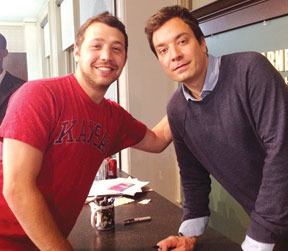 CELEBRITY SIGHTING — Ben Wilinsky, a Prairie Village resident who graduated from KU earlier this month with degrees in journalism and Spanish, visited his sister Lara in New York City over the Memorial Day weekend. (Lara currently works as associate producer for the HGTV show “Selling New York,” which airs on Thursday nights). While in New York, Ben went to Barnes & Noble where he met Jimmy Fallon, who was signing his new book, “Blow Your Pants Off.” Ben plans to move to Chicago soon and teach kindergarten through eighth-grade English in the inner city schools as part of the Teach for America program.
CELEBRITY SIGHTING — Ben Wilinsky, a Prairie Village resident who graduated from KU earlier this month with degrees in journalism and Spanish, visited his sister Lara in New York City over the Memorial Day weekend. (Lara currently works as associate producer for the HGTV show “Selling New York,” which airs on Thursday nights). While in New York, Ben went to Barnes & Noble where he met Jimmy Fallon, who was signing his new book, “Blow Your Pants Off.” Ben plans to move to Chicago soon and teach kindergarten through eighth-grade English in the inner city schools as part of the Teach for America program. 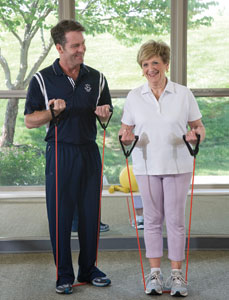 One hundred years ago today, May 31, 1912, the Jewish community established the Moshav Zkeinim Home for the Aged Society. Now known as Village Shalom, the continuing care retirement community began celebrating its 100th anniversary earlier this year and will continue to do so through its Ages of Excellence Celebration in November.
One hundred years ago today, May 31, 1912, the Jewish community established the Moshav Zkeinim Home for the Aged Society. Now known as Village Shalom, the continuing care retirement community began celebrating its 100th anniversary earlier this year and will continue to do so through its Ages of Excellence Celebration in November.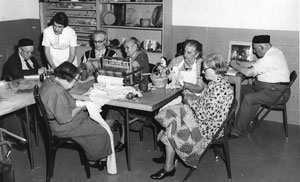 Indeed Lewis is proud of the care Village Shalom offers seniors, and said it can’t be matched anywhere else in the community.
Indeed Lewis is proud of the care Village Shalom offers seniors, and said it can’t be matched anywhere else in the community. What’s a nice Jewish guy doing on national satellite radio and writing books, playing the piano professionally, and starting his own reality show on his own network June 18?
What’s a nice Jewish guy doing on national satellite radio and writing books, playing the piano professionally, and starting his own reality show on his own network June 18? Three women were stopped for questioning after attempting to pray at the Western Wall wearing Jewish prayer shawls on Tuesday, May 22. One of the three was Sarit Horwitz, 26, a graduate of Hyman Brand Hebrew Academy and a second-year rabbinical student at the Jewish Theological Seminary of Conservative Judaism in New York. She has been in Israel for a year, studying at the Shechter Institute, a pluralistic Jewish studies seminary, as part of her rabbinical studies course.
Three women were stopped for questioning after attempting to pray at the Western Wall wearing Jewish prayer shawls on Tuesday, May 22. One of the three was Sarit Horwitz, 26, a graduate of Hyman Brand Hebrew Academy and a second-year rabbinical student at the Jewish Theological Seminary of Conservative Judaism in New York. She has been in Israel for a year, studying at the Shechter Institute, a pluralistic Jewish studies seminary, as part of her rabbinical studies course. Sidonia Perlstein survived the Holocaust to become a talented designer and seamstress. But when Perlstein died on Mother’s Day six years ago at the age of 93, she was still a mystery to the daughter she had raised alone in western Massachusetts.
Sidonia Perlstein survived the Holocaust to become a talented designer and seamstress. But when Perlstein died on Mother’s Day six years ago at the age of 93, she was still a mystery to the daughter she had raised alone in western Massachusetts.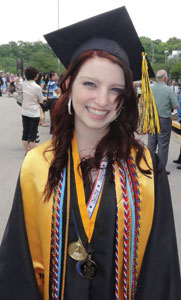 ANOTHER SHINING STAR — After the paper came out last week I quickly learned that the Jewish community had not one but TWO Jewish students who were invited to speak at their high school’s commencement ceremonies. Mollie Chesis, the daughter of Paul and Julie Chesis and a member of Congregation Beth Torah, spoke at Blue Valley High School’s graduation. A Chronicle Salute to Youth honoree in June 2011, she spoke about taking chances and relying on and trusting one’s self to move forward. Mollie collected numerous awards this year including the Superintendent’s Award and the state ACT award, received cord recognition in eight areas and was “senior of the year” in three academic departments. In addition she was one of the top four students in her school for amassing community service hours. During the school year she also assisted Linda Sweenie with the music during the Weiner Religious School’s weekly family worship and to top it off coordinated the NFTY regional Spring Havurah hosted by Beth Torah this past April. Mazel tov to Mollie and all the other scholars in our Jewish community!
ANOTHER SHINING STAR — After the paper came out last week I quickly learned that the Jewish community had not one but TWO Jewish students who were invited to speak at their high school’s commencement ceremonies. Mollie Chesis, the daughter of Paul and Julie Chesis and a member of Congregation Beth Torah, spoke at Blue Valley High School’s graduation. A Chronicle Salute to Youth honoree in June 2011, she spoke about taking chances and relying on and trusting one’s self to move forward. Mollie collected numerous awards this year including the Superintendent’s Award and the state ACT award, received cord recognition in eight areas and was “senior of the year” in three academic departments. In addition she was one of the top four students in her school for amassing community service hours. During the school year she also assisted Linda Sweenie with the music during the Weiner Religious School’s weekly family worship and to top it off coordinated the NFTY regional Spring Havurah hosted by Beth Torah this past April. Mazel tov to Mollie and all the other scholars in our Jewish community!
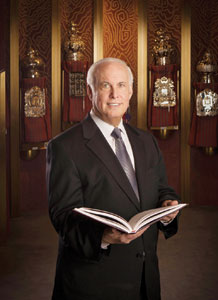 In today’s mobile society, it’s hard to find someone who has spent 35 years at the same job. In 1977, when Rabbi Herbert J. Mandl arrived in Kansas City to serve Kehilath Israel Synagogue, even he would have said it would be tough to fathom that he’d be here that long.
In today’s mobile society, it’s hard to find someone who has spent 35 years at the same job. In 1977, when Rabbi Herbert J. Mandl arrived in Kansas City to serve Kehilath Israel Synagogue, even he would have said it would be tough to fathom that he’d be here that long. Although he chose the rabbinate, Rabbi Mandl said he had always wanted to be a lawyer and a politician. Over the years he put some of those skills to work, taking on a variety of causes. One was kashrut, working tirelessly to see to it that kosher food was available in the community. He is credited with creating the Vaad HaKashruth. He currently serves as its chairman, a position that the Vaad’s Executive Director Mendal Segal said he will keep as long as he lives in Kansas City.
Although he chose the rabbinate, Rabbi Mandl said he had always wanted to be a lawyer and a politician. Over the years he put some of those skills to work, taking on a variety of causes. One was kashrut, working tirelessly to see to it that kosher food was available in the community. He is credited with creating the Vaad HaKashruth. He currently serves as its chairman, a position that the Vaad’s Executive Director Mendal Segal said he will keep as long as he lives in Kansas City.